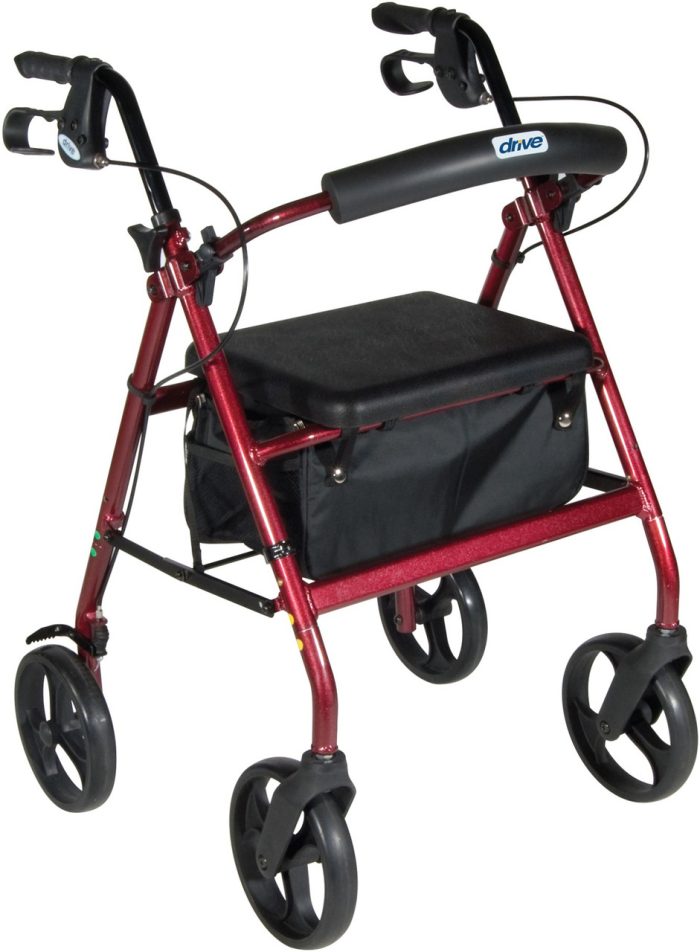Buying a Walker or Rollator
There is a common misconception that rollators and walkers are the same things, but in truth, they are two distinct forms of medical equipment. In spite of the fact that they both help people with mobility challenges walk more easily, the two approaches use quite different approaches to accomplishing this goal. This article will discuss what considerations should go into a choice on whether an adult should buy a walker or a rollator.
Adult Walker
Supports made of aluminium were used in the construction of this apparatus. Its primary characteristic is that, in order for it to work correctly while being carried, it must be raised, pushed ahead, and then set back down after each step. It is not as easy to manoeuvre as a rollator, however many versions come with wheels that make it much simpler to manoeuvre while using it. In comparison to a rollator, it offers superior support and has a lower price point, but it cannot be transported as easily.
Types
Adult walkers typically come in one of two varieties: with wheels or without wheels. The wheel type of walker features caster wheels positioned at the bottom of them, which assist the walker glide while it is being pushed by the user, providing for a smoother ride overall.
Bariatric
Bariatric products are designed for those whose weight is much higher than the typical weight of the population as a whole. In most cases, the weight capability of walkers ranges from 250 to 350 pounds. A bariatric walker is an alternative to consider in the event that either you or a member of your family weighs more than the conventional walker’s weight capacity. Its dimensions will be somewhat increased, and it has the potential to support much more weight—in certain cases, up to 600 kg.
Speciality
In addition, there is the option of using a specially designed walker. There are two types of rollers available: posterior safety rollers and anterior rollers. These are for those who have difficulty walking with a standard walker. These rollers were developed specifically to assist persons who suffer from illnesses or conditions that cause pain in the rear region while they walk in using them. These walkers are designed to assist individuals in maintaining their balance and walking in a straight manner.
Different Rollators
A regular walker is somewhat similar to a rollator, however, a rollator often has additional components such as a seat, wheels, a basket, a brake, and so on. The simplicity with which one may use a rollator in comparison to a walker is the primary benefit of using one. Rollators have an ergonomic design that makes walking a smoother action, letting the user glide across the ground easily without much effort. Rollators are often available in a range of colours and are meant to seem in vogue and sophisticated because of how popular they are.
Three-wheeled Rollator
Rollators with three wheels are often more compact and provide improved manoeuvrability in confined areas. Some individuals say that they are more fashionable and that they appear better than four-wheeled rollators (only an opinion). It comes standard with a bag that is connected to the front and may be used to hold small personal belongings.
Assisted mobility devices with four wheels.
The four-wheeled rollator is bigger than the two-wheeled rollator and, as its name suggests, it has four wheels, which provides for a more steady driving. The stability provided by a four-wheel walker might be advantageous if you live in a rural setting, on a farm, or in another location with a lot of grass and dirt. The four-wheeled rollator often has a basket that is bigger and has the capacity to hold more objects, as well as a seat that is mounted to the rollator as standard equipment.
Easy on the Stomach
When you have to push anything for a significant distance, one of the most important considerations is how much it weighs. If you want to use your rollator rather often, you should probably consider investing in a model that has a lower overall weight. The term “lightweight” refers to a rollator that has been constructed to have as little of an impact on the user’s ability to move around as possible. This is typically accomplished by constructing the rollator out of steel alloys that are lighter in weight and by decreasing the size of various components. These rollators typically weigh between 25 and 60 percent less than their respective equivalents. When a burden is lighter, it is much simpler to move and manoeuvre about. If you or a loved one has problems with carrying huge weights or weariness, or if you simply want a walker that is lightweight and easily portable, then a “low-weight rollator” is the right choice for you.
Bariatric
As is the case with walkers, there is also a bariatric version of the rollator. Again, if you or someone you care about weighs more than 300 pounds, the bariatric version of the rollator is going to be the most comfortable option.
Which Is Better: a Walker or a Rollator?
Should you invest in a walker or a rollator instead? That, of course, is dependent on the particulars of your own life. If you feel comfortable walking while using an adult walker, then I believe it is the best option for you. They are often less expensive than rollators, and you also have the option to purchase wheels for them, which may make it much easier to move about while using the product. However, if you struggle with exhaustion or weakness, want fashionable walking assistance, carry a lot of stuff, want the opportunity to sit anywhere and at any time, or simply want a smoother ride, then a rollator would be the ideal choice for you.

 1-833-207-3433
1-833-207-3433
